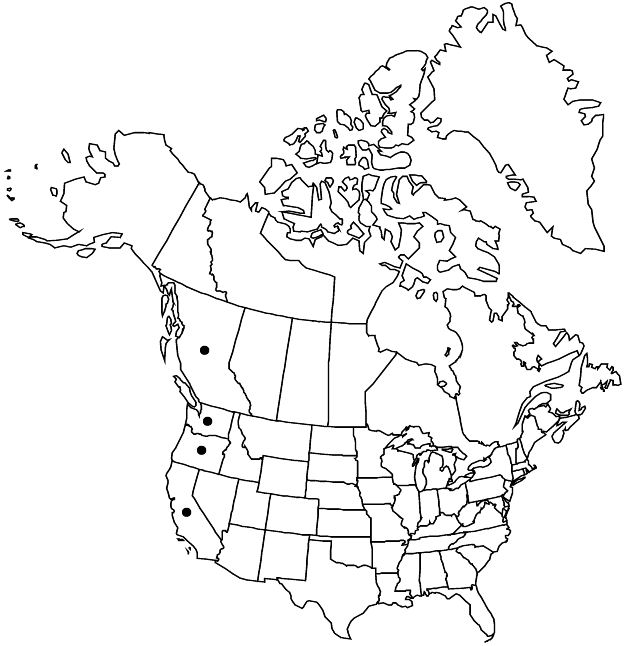Difference between revisions of "Cotoneaster lacteus"
Notes Roy. Bot. Gard. Edinburgh 10: 23. 1917.
FNA>Volume Importer |
imported>Volume Importer |
||
| (One intermediate revision by the same user not shown) | |||
| Line 28: | Line 28: | ||
|elevation=0–700 m | |elevation=0–700 m | ||
|distribution=B.C.;Calif.;Oreg.;Wash.;Asia (China);introduced also in Europe;Pacific Islands (New Zealand). | |distribution=B.C.;Calif.;Oreg.;Wash.;Asia (China);introduced also in Europe;Pacific Islands (New Zealand). | ||
| + | |introduced=true | ||
|discussion=<p><i>Cotoneaster lacteus</i> sometimes is synonymized with C. coriaceus Franchet (for example, L. Lingdi and A. R. Brach 2003). As treated here, plants of this species are identified by their fertile shoots to 10 cm, scarcely shiny leaves to 120 × 60 mm with adaxial surfaces bulging between lateral veins, flowers to 150 in lax inflorescences, 6–9 mm diam. with cream petals, and larger, later-ripening fruits. Plants of C. coriaceus have fertile shoots to 5 cm, shiny leaves to 52 × 24 mm with flat adaxial surfaces, flowers to 50 in compact inflorescences, 9–10 mm diam. with white petals, and smaller, earlier-ripening fruits.</p> | |discussion=<p><i>Cotoneaster lacteus</i> sometimes is synonymized with C. coriaceus Franchet (for example, L. Lingdi and A. R. Brach 2003). As treated here, plants of this species are identified by their fertile shoots to 10 cm, scarcely shiny leaves to 120 × 60 mm with adaxial surfaces bulging between lateral veins, flowers to 150 in lax inflorescences, 6–9 mm diam. with cream petals, and larger, later-ripening fruits. Plants of C. coriaceus have fertile shoots to 5 cm, shiny leaves to 52 × 24 mm with flat adaxial surfaces, flowers to 50 in compact inflorescences, 9–10 mm diam. with white petals, and smaller, earlier-ripening fruits.</p> | ||
|tables= | |tables= | ||
| Line 52: | Line 53: | ||
|publication year=1917 | |publication year=1917 | ||
|special status=Introduced | |special status=Introduced | ||
| − | |source xml=https:// | + | |source xml=https://bitbucket.org/aafc-mbb/fna-data-curation/src/2e0870ddd59836b60bcf96646a41e87ea5a5943a/coarse_grained_fna_xml/V9/V9_759.xml |
|subfamily=Rosaceae subfam. Amygdaloideae | |subfamily=Rosaceae subfam. Amygdaloideae | ||
|tribe=Rosaceae tribe Gillenieae | |tribe=Rosaceae tribe Gillenieae | ||
Latest revision as of 22:59, 5 November 2020
Shrubs or trees, 2–9 m. Stems erect, arching, spreading, slender; branches spiraled or distichous, purple-black, initially yellowish tomentose-villous. Leaves persistent; petiole 5–8 mm, initially tomentose; blade obovate to elliptic, rarely broadly elliptic, (26–)40–85(–120) x (13–)19–45(–60) mm, coriaceous, base cuneate, margins flat or slightly revolute, veins 7–9, deeply sunken, apex short-tapered, acute, acuminate, or obtuse, abaxial surfaces initially yellowish tomentose-villous, adaxial dark green, dull or slightly shiny, not glaucous, bulging slightly between lateral veins, initially sparsely pilose. Inflorescences on fertile shoots 45–100 mm with 4 leaves, 20–150-flowered, lax. Pedicels 1–5 mm, tomentose-strigose. Flowers 6–9 mm diam.; buds creamy white, sometimes slightly pinkish; hypanthium funnelform, tomentose-strigose; sepals: margins villous, apex cuspidate, surfaces tomentose; petals spreading, creamy white, sometimes with hair tuft; stamens 20, filaments white, anthers red-purple; styles 2. Pomes crimson, broadly obovoid, subglobose, or globose, 6.5–8.6 × 6.5–7.6 mm, shiny, not glaucous, sparsely villous; sepals depressed or slightly ascending, tomentose; navel slightly open or obscured by sepals; style remnants near apex. Pyrenes 2. 2n = 68 (Germany).
Phenology: Flowering May–Jul; fruiting Nov–Apr.
Habitat: Thickets, disturbed forests, edges, urban waste ground, stonework, grassy bluffs, canyons, pond shores
Elevation: 0–700 m
Distribution

Introduced; B.C., Calif., Oreg., Wash., Asia (China), introduced also in Europe, Pacific Islands (New Zealand).
Discussion
Cotoneaster lacteus sometimes is synonymized with C. coriaceus Franchet (for example, L. Lingdi and A. R. Brach 2003). As treated here, plants of this species are identified by their fertile shoots to 10 cm, scarcely shiny leaves to 120 × 60 mm with adaxial surfaces bulging between lateral veins, flowers to 150 in lax inflorescences, 6–9 mm diam. with cream petals, and larger, later-ripening fruits. Plants of C. coriaceus have fertile shoots to 5 cm, shiny leaves to 52 × 24 mm with flat adaxial surfaces, flowers to 50 in compact inflorescences, 9–10 mm diam. with white petals, and smaller, earlier-ripening fruits.
Selected References
None.